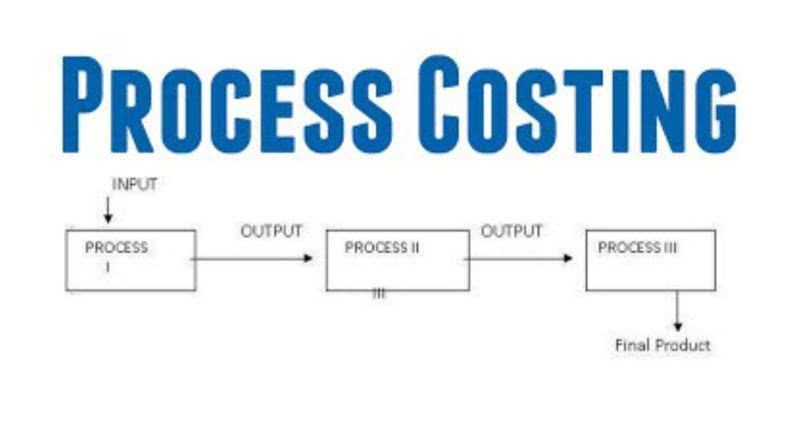Content

This will be discussed later when we prepare adjusting journal entries. Once you complete your adjusting journal entries, remember to run an adjusted trial balance, which is used to create closing entries. Any time you purchase a big ticket item, you should also be recording accumulated depreciation and your monthly depreciation expense. Most small business owners choose straight-line depreciation to depreciate fixed assets since it’s the easiest method to track. Depreciation is always a fixed cost, and does not negatively affect your cash flow statement, but your balance sheet would show accumulated depreciation as a contra account under fixed assets. For instance, if you decide to prepay your rent in January for the entire year, you will need to record the expense each month for the next 12 months in order to account for the rental payment properly.
- But this entry will let you see your true expenses for management purposes.
- Unearned revenues are also recorded because these consist of income received from customers, but no goods or services have been provided to them.
- When customers pay you for services or goods that you’ll deliver in the future, you have deferred revenue.
- Common prepaid expenses include rent and professional service payments made to accountants and attorneys, as well as service contracts.
- The list goes on for the types of adjusting entries that companies would record, or you could see on the CPA exam or would need to record for a real company.
- Service Revenue increases (credit) for $1,500 because service revenue was earned but had been previously unrecorded.
First, record the income on the books for January as deferred revenue. Then, in March, when you deliver your talk and actually earn the fee, move the money from deferred revenue to consulting revenue. Suppose in February you hire a contract worker to help you out with your tote bags.
Accrued revenue
This also relates to the matching principle where the assets are used during the year and written off after they are used. Depreciation expenses, including depreciation expense and accumulated depreciation, need to be posted to properly expense the useful life of a fixed asset. Depreciation is a fixed cost and does not negatively affect cash flow, but the balance sheet would show accumulated depreciation as a contra account under fixed assets.
Timely, reliable data is critical for decision-making and reporting throughout the M&A lifecycle. Without accurate information, organizations risk making poor business decisions, paying too much, issuing inaccurate financial statements, and other errors. The same process applies to recording accounts payable and business expenses.
What Is the Purpose of Adjusting Journal Entries?
Additional types might include bad debts (or doubtful accounts), and other allowances. Each year you will use your depreciation adjusting entries to update your balance sheet on the remaining value of the asset as well. This allows you to easily identify and get reports for adjusting journal entries. Rebates are payments made back to you from a supplier (or from you to a customer) retrospectively, reducing the overall cost of a product or service.

In practice, you are more likely to encounter deferrals than accruals in your small business. The most common deferrals are prepaid expenses and unearned revenues. The cash-basis accounting system is better for very small businesses. If you’re paid for an item on Jan. 3, for example, the money goes on your income statement account on that date. Accrued expenses and accrued revenues – Many times companies will incur expenses but won’t have to pay for them until the next month. Since the expense was incurred in December, it must be recorded in December regardless of whether it was paid or not.
How adjusting entries are made
Sometimes, they are also used to correct accounting mistakes or adjust the estimates that were previously made. Deferrals refer to revenues and expenses that have been received or paid adjusting entries examples in advance, respectively, and have been recorded, but have not yet been earned or used. Unearned revenue, for instance, accounts for money received for goods not yet delivered.
- Your accountant will likely give you adjusting entries to be made on an annual basis, but your bookkeeper might make adjustments monthly.
- Start at the top with the checking account balance or whatever is the first account on the trial balance.
- Again, this type of adjustment is not common in small-business accounting, but it can give you a lot of clarity about your true costs per accounting period.
- For example, going back to the example above, say your customer called after getting the bill and asked for a 5% discount.
- This means the company pays for the insurance but doesn’t actually get the full benefit of the insurance contract until the end of the six-month period.
- Integrate with treasury systems to facilitate and streamline netting, settlement, and clearing to optimize working capital.
- Adjusting entries usually involve one or more balance sheet accounts and one or more accounts from your profit and loss statement.
The financial statements must remain up to date, so an adjusting entry is needed during the month to show salaries previously unrecorded and unpaid at the end of the month. Previously unrecorded service revenue can arise when a company provides a service but did not yet bill the client for the work. Since there was no bill to trigger a transaction, an adjustment is required to recognize revenue earned at the end of the period.
They didn’t receive these wages until Jan. 1, because you pay your employees on the 1st and 15th of each month. The paralegal will be paid on the first of March for work performed in February. Because you haven’t earned the $50,000 yet, you record it as unearned revenue. In contrast to accruals, deferrals are cash prepayments that are made prior to the actual consumption or sale https://www.bookstime.com/articles/normal-balance of goods and services. Accruals refer to payments or expenses on credit that are still owed, while deferrals refer to prepayments where the products have not yet been delivered. With NetSuite, you go live in a predictable timeframe — smart, stepped implementations begin with sales and span the entire customer lifecycle, so there’s continuity from sales to services to support.
- This often pertains to the accounts for accrued expenses, accrued revenue, prepaid expenses, and unearned revenue.
- The two specific types of adjustments are accrued revenues and accrued expenses.
- If you have adjusting entries that need to be made to your financial statements before closing your books for the year, does that mean your books aren’t as accurate as you thought?
- Deferred revenue is used when your company receives a payment in advance of work that has not been completed.
- Our experts love this top pick, which features a 0% intro APR for 15 months, an insane cash back rate of up to 5%, and all somehow for no annual fee.
- When the cash is received at a later time, an adjusting journal entry is made to record the cash receipt for the receivable account.
- The Inventory Loss account could either be a sub-account of cost of goods sold, or you could list it as an operating expense.
